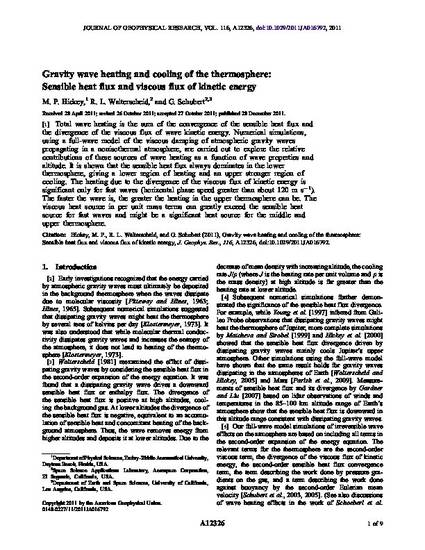
Total wave heating is the sum of the convergence of the sensible heat flux and the divergence of the viscous flux of wave kinetic energy. Numerical simulations, using a full-wave model of the viscous damping of atmospheric gravity waves propagating in a nonisothermal atmosphere, are carried out to explore the relative contributions of these sources of wave heating as a function of wave properties and altitude. It is shown that the sensible heat flux always dominates in the lower thermosphere, giving a lower region of heating and an upper stronger region of cooling. The heating due to the divergence of the viscous flux of kinetic energy is significant only for fast waves (horizontal phase speed greater than about 120 m s¯¹). The faster the wave is, the greater the heating in the upper thermosphere can be. The viscous heat source in per unit mass terms can greatly exceed the sensible heat source for fast waves and might be a significant heat source for the middle and upper thermosphere.
